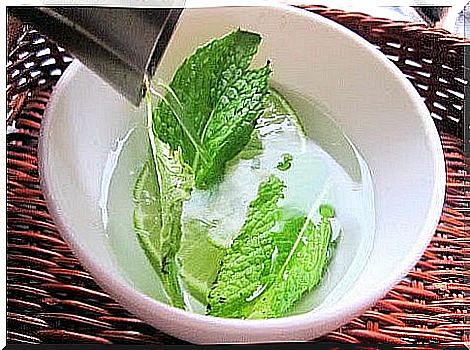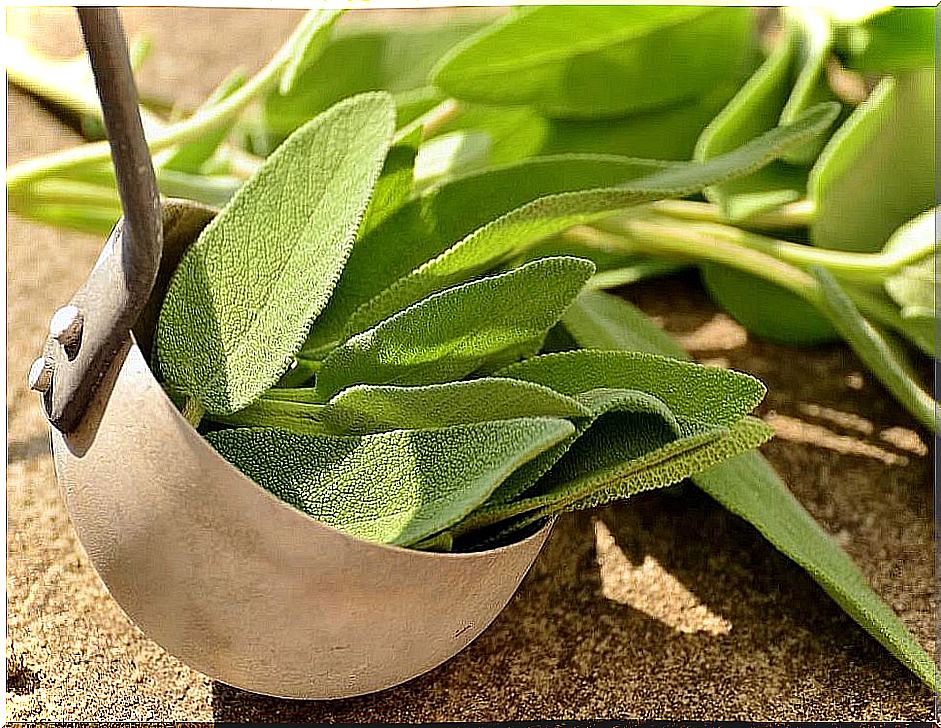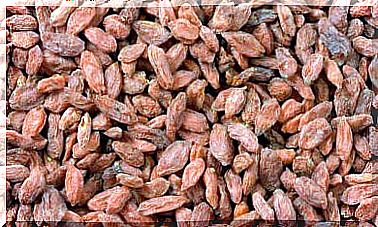Learn How To Prepare Sage Infusion And Know Its Benefits
The infusion of sage is a natural remedy with many applications in health. Its properties have been known since ancient times and, today, they are still valid as an alternative to help prevent various diseases
Sage, whose name means “heal” or “heal”, is an aromatic plant native to southern Europe and the Mediterranean region. It belongs to the labiate family and grows in the form of a shrub, with oval leaves and purple and white flowers.
It has always been valued for its multiple properties, since it has active ingredients with anti-inflammatory, antimicrobial and antispasmodic action. In addition, it contains vitamins A and C and essential minerals that, once assimilated in the body, strengthen the immune system to improve the response against infectious agents.
There are many other reasons why everyone should try this plant. Next, we want to share the recipe for your infusion and some of its most outstanding benefits.
Do not miss it!
How to prepare sage infusion?

Natural extracts from sage leaves are being used in industry to make tablets and topical preparations. However, its preparation as an infusion is still one of the best ways to take advantage of its properties.
Ingredients
- 1 cup of water (250 ml)
- 1 tablespoon of sage leaves (15 g)
Preparation
- Add the cup of water to a pot and bring it to a boil.
- Once it reaches its boiling point, add the tablespoon of sage leaves and reduce the heat to a minimum.
- Leave it for 3 or 5 more minutes and remove it.
- Wait for it to sit for 10 minutes at room temperature and strain it.
Note : To reduce its bitter taste it can be sweetened with honey or stevia. Also, adding lemon and cinnamon has a very nice touch.
Consumption mode
The way of ingesting sage infusion can vary depending on the benefits to be obtained. However, in general, it is advisable to have one cup in the morning and another in the evening.
Benefits of sage infusion that you will like to know
Despite the properties of sage infusion, it is important to consult your doctor about its consumption, since in some cases it interacts negatively with medications or is contraindicated. If it is okay to take it, there are many benefits that you can take advantage of.
Also read: 7 signs of kidney problems.
Helps reduce inflammation

The infusion of sage has anti-inflammatory properties that help calm the ailments of diseases such as rheumatism or arthritis. It also acts as a muscle relaxant and reduces pain caused by blows or overexertion.
Relieves menstrual problems
Sage helps regulate estrogen levels in women; therefore, it is an excellent solution for menstrual problems. Its infusion is a good remedy for colic and heavy bleeding.
Improves digestive health

In the infusion of sage carminative and antispasmodic principles are concentrated that help to calm the symptoms of indigestion and constipation. A good infusion of sage is ideal after a copious meal. It is especially indicated to reduce flatulence, nausea and vomiting.
Good at menopause

Due to its ability to regulate the activity of female hormones, the infusion of sage is an effective remedy that helps reduce the symptoms of menopause. Its consumption reduces the typical hot flashes and, in addition, can improve the quality of sleep and the feeling of vitality.
Fight pharyngitis

Sage-infused rinses or swish help reduce sore throat caused by pharyngitis. Its anti-inflammatory properties reduce mucosal irritation, while its antimicrobial action kills germs.
Ally in cases of diabetes

Sage is attributed hypoglycemic properties. For this reason, its regular intake helps control high blood sugar levels. In fact, it is recommended as a treatment for patients diagnosed with diabetes.
Has antioxidants

In the composition of sage there are polyphenolic compounds that act as powerful antioxidants. Therefore, its infusion can serve to fight against the effects of free radicals on the internal organs and the skin.
Contraindications of sage infusion

While the infusion of sage can be useful to alleviate the symptoms of many diseases, in some special cases it should not be consumed. This is because it is contraindicated and can cause unwanted side reactions.
Sage should not be taken in case of:
- Pregnancy and breastfeeding
- Renal insufficiency
- Allergy to the lipped plant family
- Benign breast tumors
- Excess folliculin in the blood
- Neurological problems or epilepsy
In conclusion, there are many reasons to prepare sage infusion in order to promote well-being. The important thing is to take into account the cases in which it is contraindicated so as not to suffer negative consequences from its consumption.









